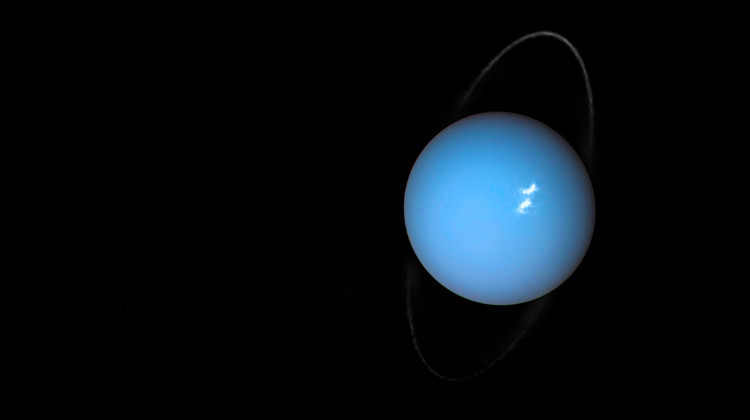Back to: Weekend Sky Report

Image Info: Aurorae on Uranus taken by the Space Telescope Imaging Spectrograph (STIS) installed on Hubble. - ESA/Hubble
Uranus
October 25, 2019
This coming Tuesday, Uranus will be at opposition… meaning the Earth is directly between it and the sun. When a planet is at opposition, it’s at its brightest for the year. Now, even at its brightest, Uranus is still fairly dim. So dim, it wasn’t discovered until the late 18th century when astronomer William Herschel saw what he first thought was a comet, but further observation proved it was indeed a planet beyond Saturn.
This weekend, you can find Uranus in the Eastern sky between the constellations Aries and Pisces with Aries to the left, and Pisces to the right. To find Uranus, trace a line between the second-brightest star in Aries, Beta Arietis (uh-RYE-uh-tiss), and the bottom or cord star in Pisces, Alpha Piscium. From the center of that imaginary line, scan to the right with your telescope. When you see a blue disc, you’ve found it.
And you will need a telescope. Binoculars won’t really work unless they’re particularly powerful or made especially for astronomy. The good news is, almost any telescope should show you at least something if you’re looking in the right spot.
Uranus is a very different planet in a lot of ways. You may remember it being categorized as a gas giant. But since the 1990s when it was discovered that the composition of Uranus and Neptune was in fact VERY different from that of Jupiter and Saturn, the terminology changed. Rather than the hydrogen and helium found in gas giants, ice giants are composed primarily of methane, ammonia, and yes… good old H2O.
 DONATE
DONATE













 Support WFYI. We can't do it without you.
Support WFYI. We can't do it without you.